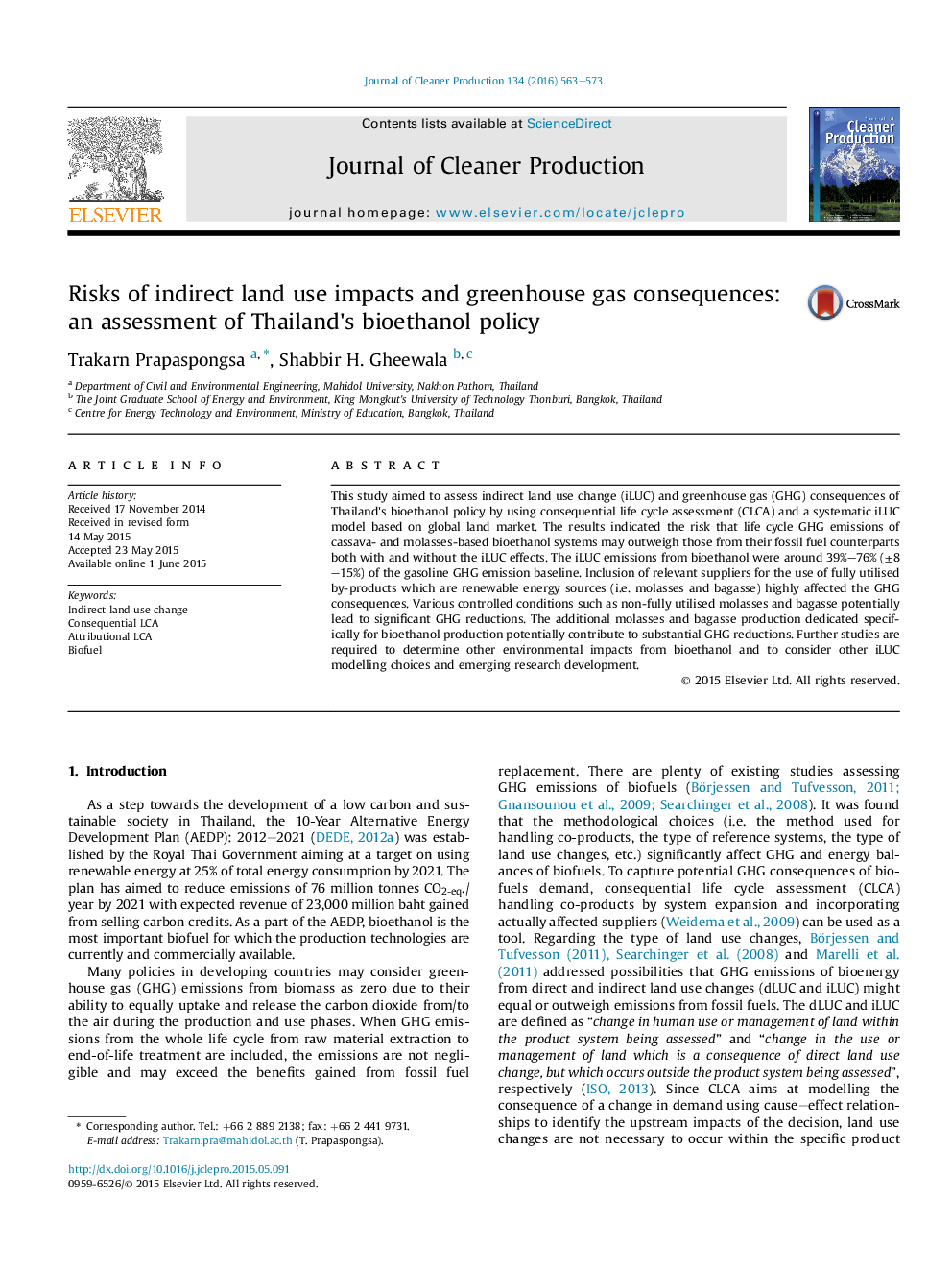| Article ID | Journal | Published Year | Pages | File Type |
|---|---|---|---|---|
| 1744020 | Journal of Cleaner Production | 2016 | 11 Pages |
•There are risks that GHG emissions from bioethanol outweigh those from fossil fuel.•iLUC emissions from the bioethanol are 40–80% of the gasoline GHG emission baseline.•Fully utilised renewable by-products may lead to non-renewable energy consumption.•Under certain conditions, GHG reductions can be obtained by the bioethanol policy.
This study aimed to assess indirect land use change (iLUC) and greenhouse gas (GHG) consequences of Thailand's bioethanol policy by using consequential life cycle assessment (CLCA) and a systematic iLUC model based on global land market. The results indicated the risk that life cycle GHG emissions of cassava- and molasses-based bioethanol systems may outweigh those from their fossil fuel counterparts both with and without the iLUC effects. The iLUC emissions from bioethanol were around 39%–76% (±8–15%) of the gasoline GHG emission baseline. Inclusion of relevant suppliers for the use of fully utilised by-products which are renewable energy sources (i.e. molasses and bagasse) highly affected the GHG consequences. Various controlled conditions such as non-fully utilised molasses and bagasse potentially lead to significant GHG reductions. The additional molasses and bagasse production dedicated specifically for bioethanol production potentially contribute to substantial GHG reductions. Further studies are required to determine other environmental impacts from bioethanol and to consider other iLUC modelling choices and emerging research development.
